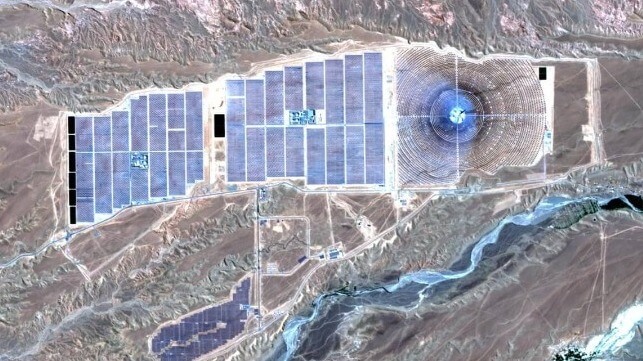Startup Wants to Export Morocco's Green Power to UK - Under the Sea

Two startups have agreed to partner on an ambitious plan to link Morocco’s renewable energy resources with the UK power grid using an ultra-long subsea power cable.
UK retail energy supplier Octopus Energy has announced it will be backing Xlinks in its plans to construct a giant 2,000 nautical mile undersea cable, intended to export solar and wind energy from Morocco to the UK under the sea.
Xlinks announced in April that it is eyeing investor backing to raise $19 billion for the revolutionary project. It has already secured approximately $48 million in developmental funding, which is being used to conduct economic, environmental and archeological assessments.
By partnering with Xlinks, Octopus Energy said it is exploring potential offtaking rights. It also hopes to reach an agreement that would see use of its proprietary Krakenflex platform during the project. Essentially, Krakenflex is an energy-management tech solution that allows its commercial customers to digitally control distributed energy resources.
“Instead of importing expensive, dirty gas, how about super-cheap Moroccan sun and wind, 20 hours a day?” Octopus Energy wrote on Twitter.
Over the last decade, Morocco has become a leader in renewable energy. Its access to vast solar and wind resources in the Sahara guarantees sustainable power production throughout the year.
Based on this geographic advantage, the Moroccan government has recognized that exporting green energy is an important economic opportunity, and it is developing an export strategy.
But how do you export surplus sun and wind energy from a desert in one country for use in another?
This is the challenge that Xlinks intends to solve. First, the company wants to develop a new power generation facility in Morocco’s renewable energy-rich region of Guelmim Oued Noun. The giant project would cover an approximate area of 580 square miles and would provide 3.6 gigawatts of capacity for 20 or more hours a day.
The facility would be connected to UK via 2,000 nautical miles of high voltage direct current (HVDC) subsea cables, passing through Portugal, Spain and France, before landing in the village of Alverdiscott, Devon. If completed, it would be the longest undersea power cable in the world.
As renewable energy gains popularity in line with net zero emissions goal, most countries with a surplus of sun and wind energy are seeking export solutions. Hence, transferring the energy via cables to a neighboring country in need appears to be the most cost-effective means.
Already, export of renewables through sub-sea cables, also commonly known as interconnectors, is gaining traction.
Specifically, the rise of the offshore wind industry in UK has made interconnectors even more attractive, as it allows Britain to export power at times of surplus and import it when needed.

that matters most
Get the latest maritime news delivered to your inbox daily.
Recently, Britain and Norway completed laying of a 390 nm subsea cable across the North Sea. The cable delivers British wind energy to Norway’s grid and sends hydropower to the UK in return.
“The production of cables will create a completely new, fast growing manufacturing industry for the UK in the renewable energy space,” the Chairman of Xlinks, Sir Dave Lewis told Sky News UK in an interview last month.
